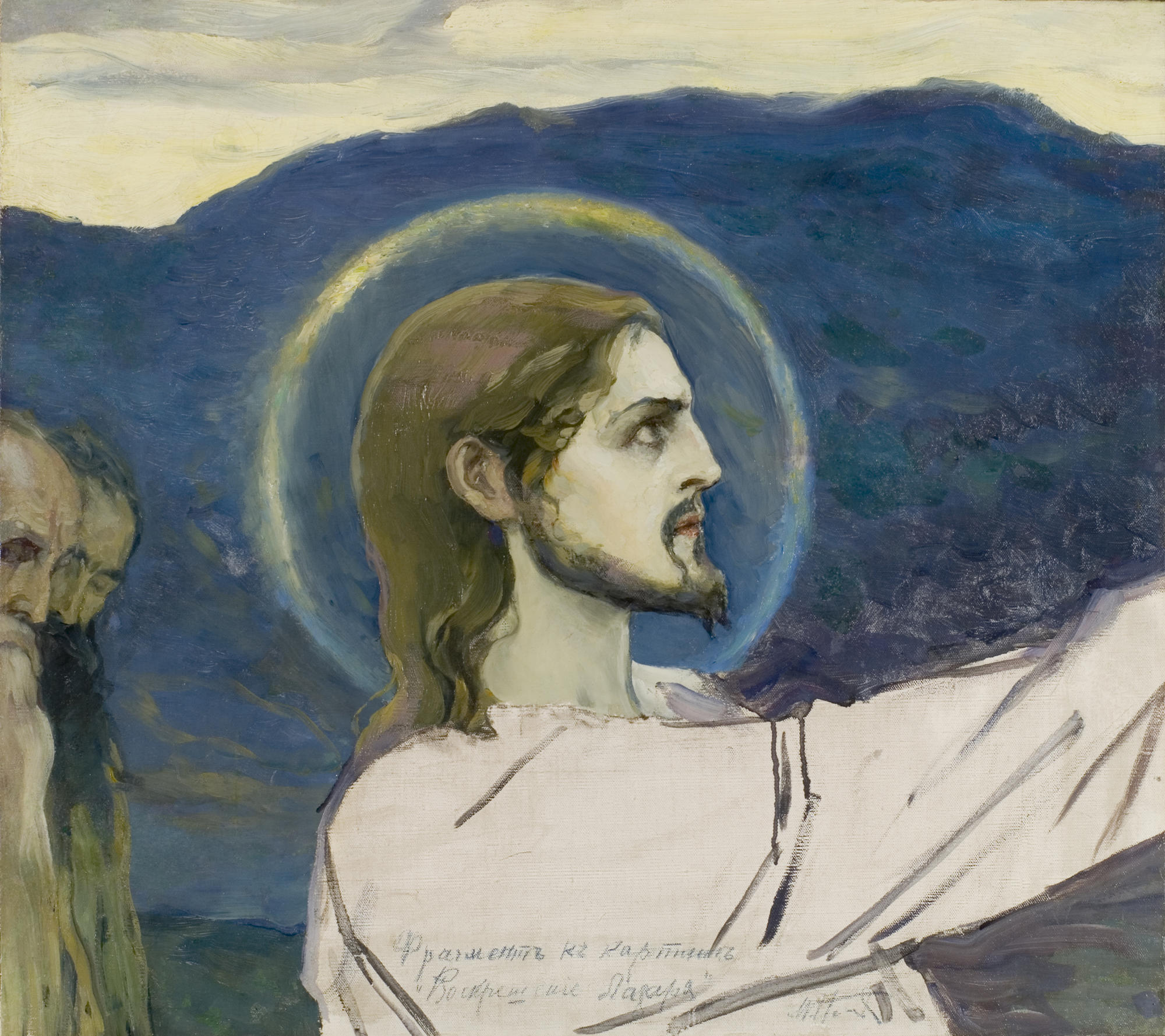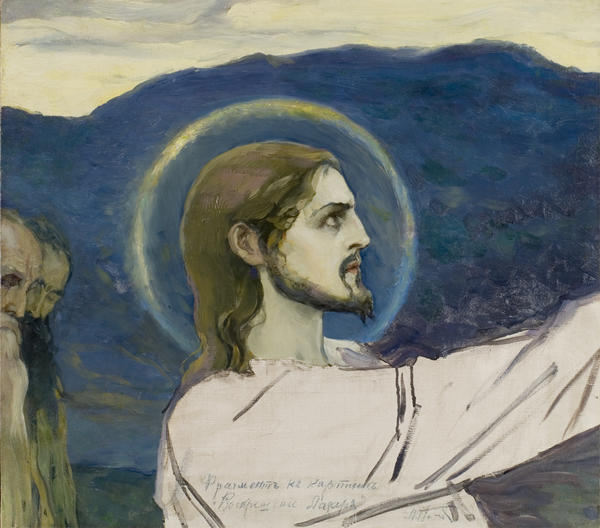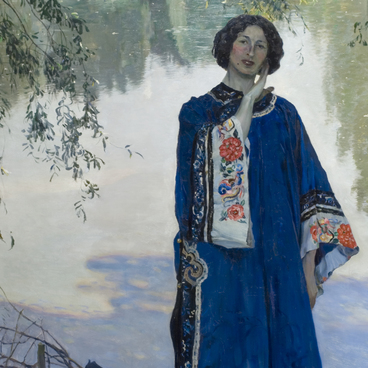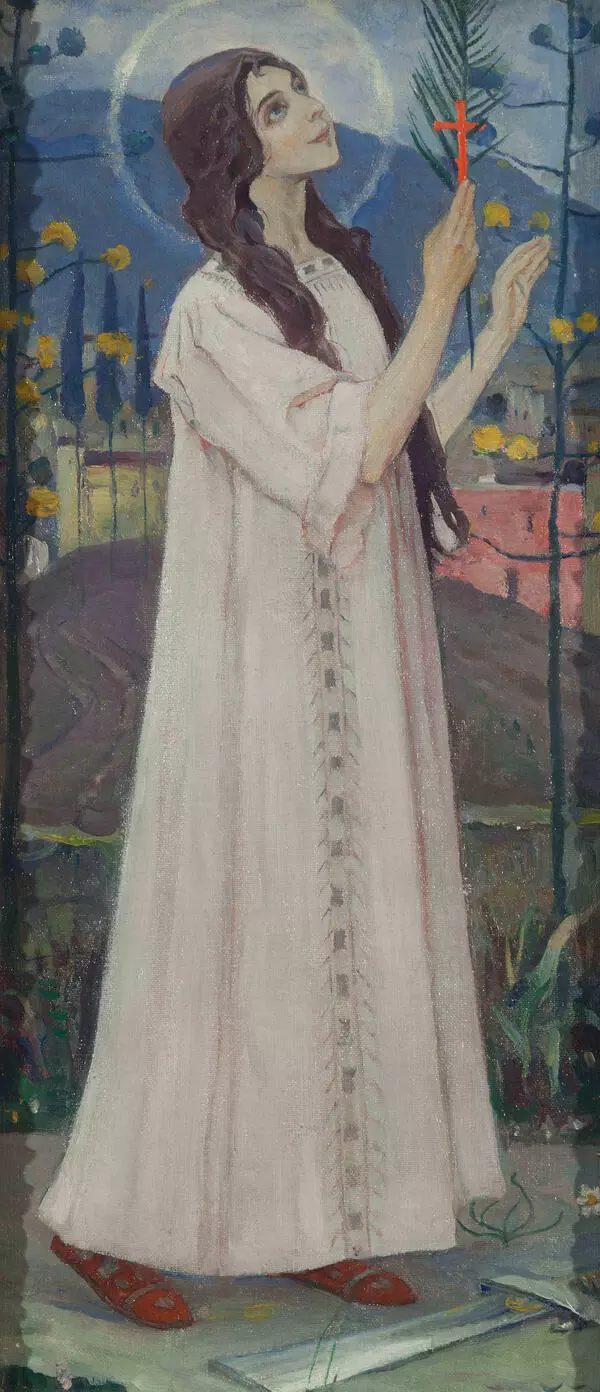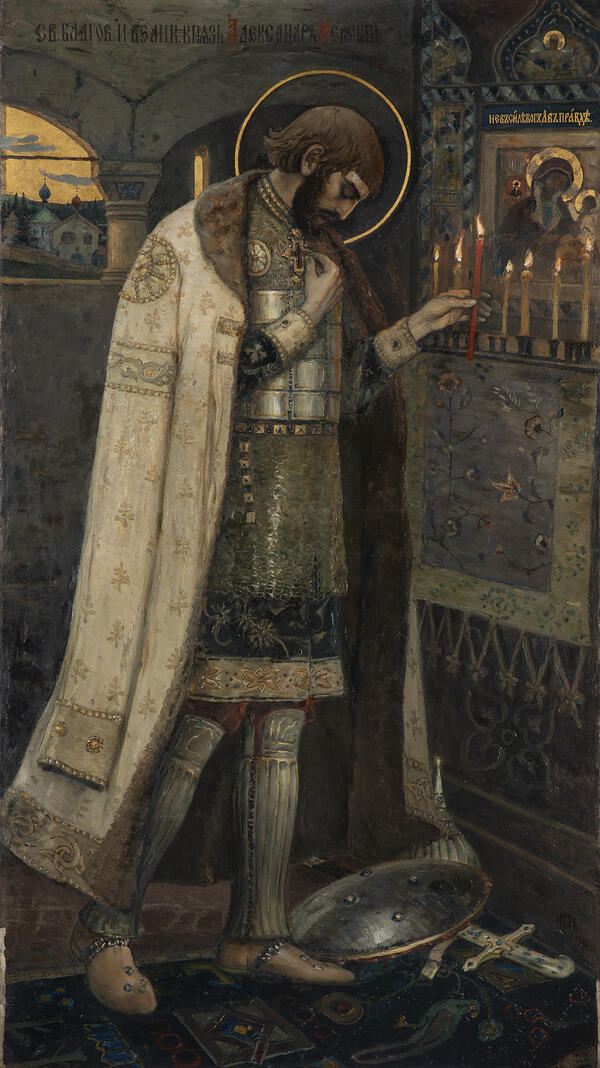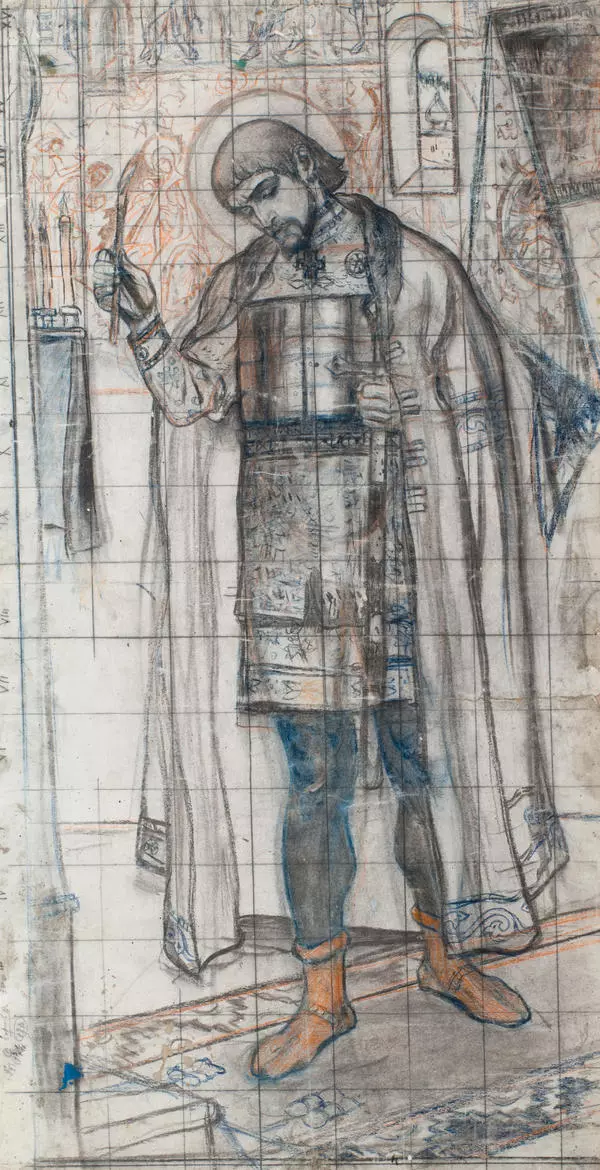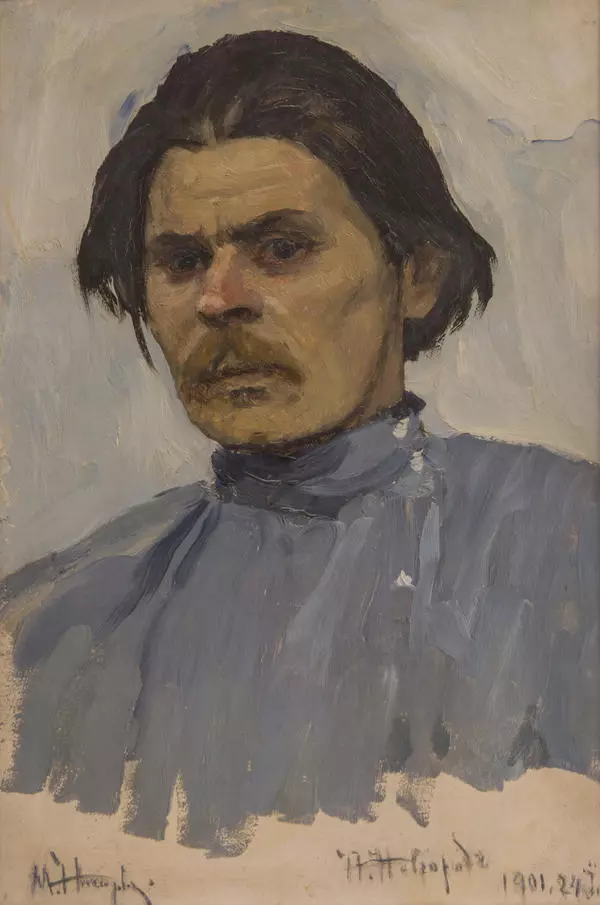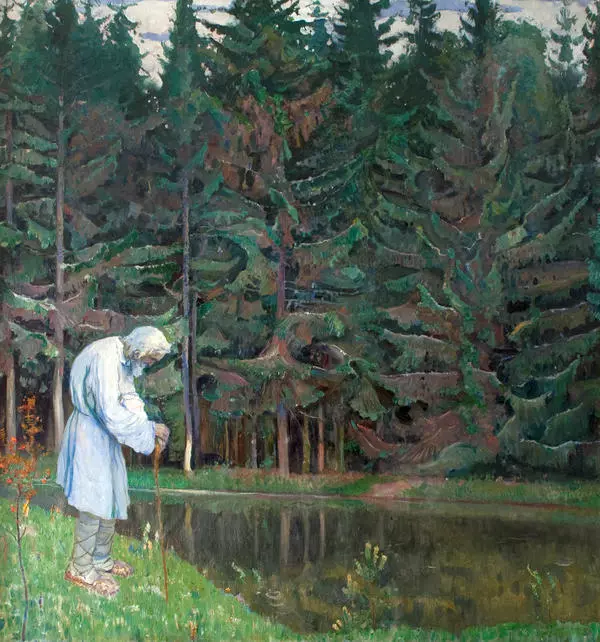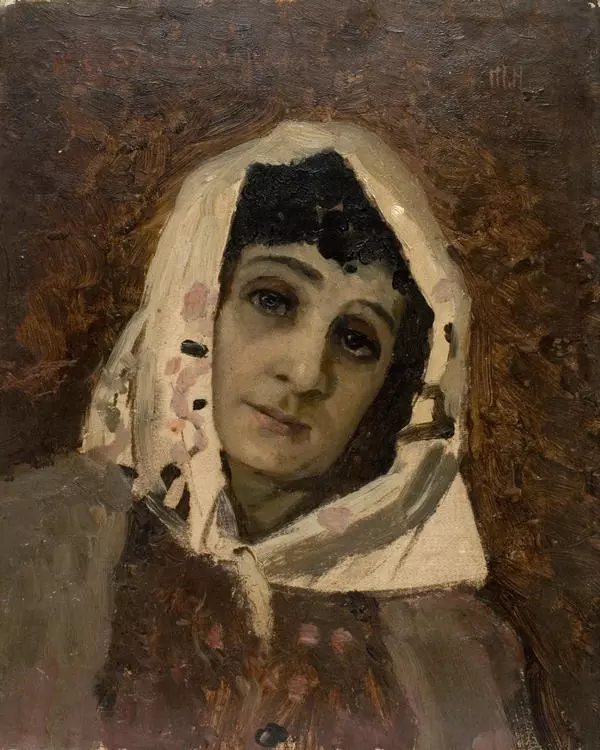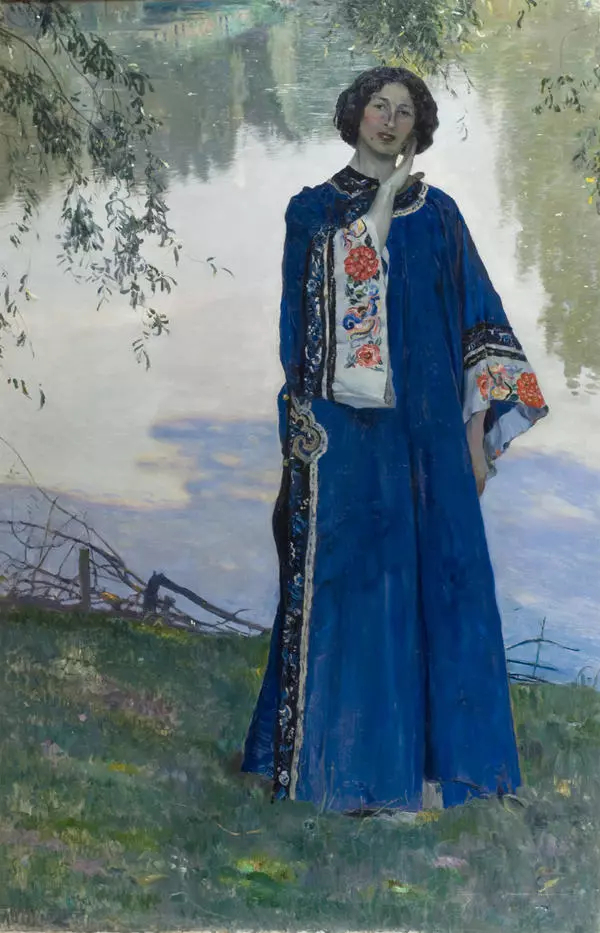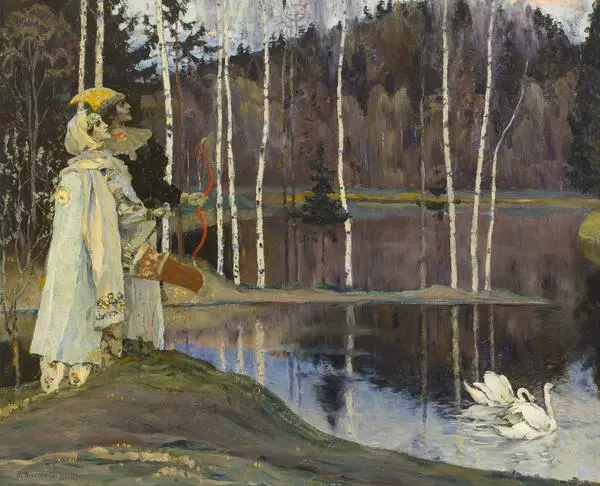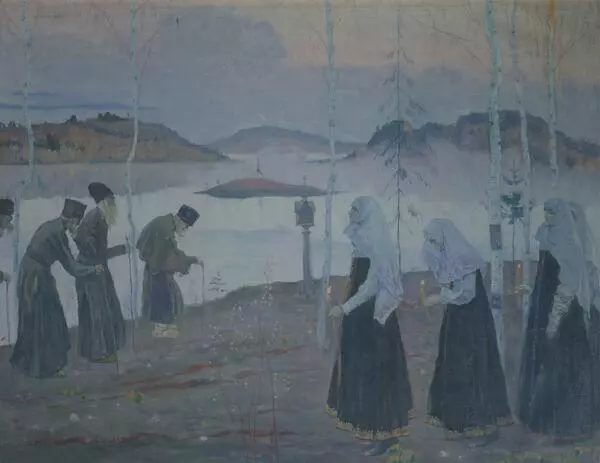Russian and Soviet artist Mikhail Vasilyevich Nesterov was born in 1862 in a merchant’s family. He lived in Ufa as a child, and at the age of twelve left for Moscow where he entered one of the most famous educational establishments – K.P. Voskresensky non-classical secondary school. Three years later the future artist was admitted to the Moscow School of Arts, Sculpture and Architecture. One of his first teachers who had a great influence on his early artistic manner, was a distinguished Russian painter Vasily Grigorievich Perov.
In 1880’s, Mikhail Nesterov created paintings on historic subjects and illustrations to literary works of Russian classics. At the age of 24 he was awarded the title of class artist and a great silver medal. In 1889 Nesterov visited Europe and was greatly impressed by it.
In 1890s, Mikhail Vasilyevich Nesterov created several paintings devoted to St. Sergius of Radonezh. The painting Vision to the Youth Bartholomew of 1890 caused a sensation at the exhibition of Itinerants and was acquired for the collection of Tretyakov Gallery. At the same time the artist took to painting church murals and icons and devoted to it over twenty-two years of his life. He painted murals in St. Vladimir Cathedral in Kiev, the palace church of Alexander Nevsky in Abastumani, the Cathedral of Transfiguration of the Savior in Sumy.
Church mural paintings had a great influence on Nesterov’s art, he devoted many of his paintings to religious subjects. It is noteworthy that Nesterov never portrayed solemn religious rites or rich inside decoration of cathedrals. Russian theologian and literary scholar Sergei Nikolaevich Durylin noted that Mikhail Nesterov always led his monks and venerable elders away from churches and monasteries, depicting them in nature.
The painting Resurrection of Lazarus evidences a special attitude of Mikhail Vasilyevich Nesterov to portrayal of the image of Christ. He created it in 1900 when painting murals in the church of Alexander Nevsky in Abastumani. Unfortunately, only a fragment of the painting survived, the image of Christ, as the artist was not satisfied with the result and cut the painting into pieces. The holy face and body of the Savior are painted with wide stroke in symbolic coloration characteristic of modernist style, using bluish-green and yellow shades.
The artist’s last painting was Autumn in a Village, which he painted under the impression from the poetry of Alexandr Sergeyevich Pushkin. Mikhail Vasilyevich Nesterov passed away at the age of eighty and is buried at the Novodevichye Cemetery in Moscow.
In 1880’s, Mikhail Nesterov created paintings on historic subjects and illustrations to literary works of Russian classics. At the age of 24 he was awarded the title of class artist and a great silver medal. In 1889 Nesterov visited Europe and was greatly impressed by it.
In 1890s, Mikhail Vasilyevich Nesterov created several paintings devoted to St. Sergius of Radonezh. The painting Vision to the Youth Bartholomew of 1890 caused a sensation at the exhibition of Itinerants and was acquired for the collection of Tretyakov Gallery. At the same time the artist took to painting church murals and icons and devoted to it over twenty-two years of his life. He painted murals in St. Vladimir Cathedral in Kiev, the palace church of Alexander Nevsky in Abastumani, the Cathedral of Transfiguration of the Savior in Sumy.
Church mural paintings had a great influence on Nesterov’s art, he devoted many of his paintings to religious subjects. It is noteworthy that Nesterov never portrayed solemn religious rites or rich inside decoration of cathedrals. Russian theologian and literary scholar Sergei Nikolaevich Durylin noted that Mikhail Nesterov always led his monks and venerable elders away from churches and monasteries, depicting them in nature.
The painting Resurrection of Lazarus evidences a special attitude of Mikhail Vasilyevich Nesterov to portrayal of the image of Christ. He created it in 1900 when painting murals in the church of Alexander Nevsky in Abastumani. Unfortunately, only a fragment of the painting survived, the image of Christ, as the artist was not satisfied with the result and cut the painting into pieces. The holy face and body of the Savior are painted with wide stroke in symbolic coloration characteristic of modernist style, using bluish-green and yellow shades.
The artist’s last painting was Autumn in a Village, which he painted under the impression from the poetry of Alexandr Sergeyevich Pushkin. Mikhail Vasilyevich Nesterov passed away at the age of eighty and is buried at the Novodevichye Cemetery in Moscow.
